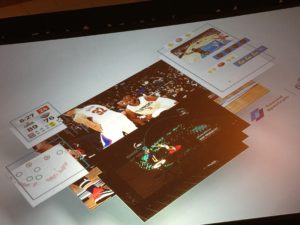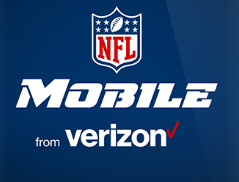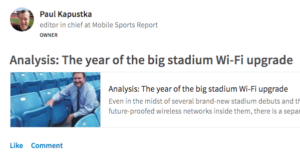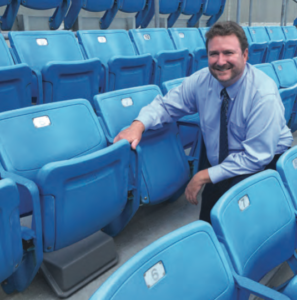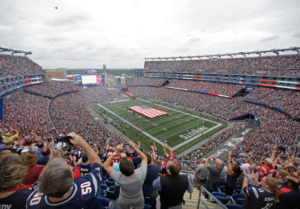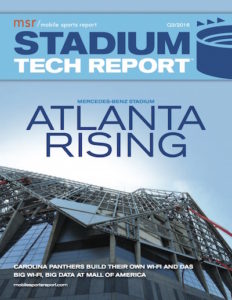Both announcements were made by VenueNext Tuesday, just ahead of Wednesday’s season opener for the Sharks at SAP Center in San Jose. The new app is ready for fans to download in time for the Sharks’ game against the Los Angeles Kings. Later this season fans will also be able to connect via the arena’s new Wi-Fi network, which will use Wi-Fi gear from Cisco.
The new round of funding brings VenueNext’s total of announced venture capital to $24 million, following a $9 million round raised last summer. Causeway Media Partners, which led the initial round, is also leading the new round; according to VenueNext some of its first-round investors are also participating in the B round, but the company did not yet name any of them other than Causeway. Twitter, Live Nation and Aruba were among the Series A investors in VenueNext.
Adding hospitality and healthcare to market targets
In the increasingly competitive market for stadium and team application development, VenueNext has had a solid year in breaking away from just being the app provider to the San Francisco 49ers and Levi’s Stadium, its initial offering. So far this year, new VenueNext apps have appeared at Super Bowl 50, Yankee Stadium, Churchill Downs for the Kentucky Derby, and at the Minnesota Vikings’ new home, U.S. Bank Stadium. VenueNext also announced a new app being developed for the Saratoga and Belmont horse-racing tracks, which will be launched next year.
While VenueNext still hasn’t come close to publicly announcing the 30 clients CEO John Paul said the company would have by the end of 2015, the list of announced clients now includes the 49ers and Super Bowl 50, the Dallas Cowboys, the Orlando Magic, and now the San Jose Sharks. According to VenueNext, it does have clients signed already in the healthcare and hospitality markets, but cannot name them due to confidentiality agreements. VenueNext said it will announce more customers in the next few months.Sharks fans get beverage, not food, delivery to seats — for now
One of the signature VenueNext services at Levi’s Stadium, the ability for all fans to use the app to order concessions delivered to their seats, will initially only support in-seat beverage ordering and delivery for Sharks fans, according to VenueNext. That service is similar to how the VenueNext app was used at Super Bowl 50. Other new services now available at SAP Center via the app include digital ticketing, with the ability to view, upgrade or transfer tickets; the ability to view and manage parking passes; mobile ticket access via the VenueNext ticket kiosks; and team content.
According to Sharks chief operating officer John Tortora, the team was first introduced to VenueNext during the NHL Stadium Series game at Levi’s Stadium in February of 2015.
“We were impressed with their execution at that event and have witnessed the business success they have generated at sports venues throughout the country,” said Tortora of VenueNext in an email communiction. “We look to bring that standard to SAP Center.” According to Tortora, wayfinding and virtual reality experiences are among features that will be added to the app in the future.
The Sharks app page also says that during the season the app will add a large list of Sharks-related content, including team and league stats, and it will also add in-game trivia contests. So far in most of its deployments, VenueNext has added and improved features in its apps over time.
On the Wi-Fi side, the venue is now getting its first full-scale Wi-Fi network for fans, a deployment that will include the use of Cisco StadiumVision for digital-display controls. According to the Sharks, the Wi-Fi network is expected to be operational by Dec. 1.
“To complement our new Sharks app and the use of it at SAP Center, we are in the process of deploying Cisco Connected Stadium Wi-Fi, a best-in-class Wi-Fi platform used in sports venues around the world,” Tortora said. “We want our patrons to be able to easily and reliably connect while at SAP Center to allow for the best fan experience when attending Sharks games and other events.”
VenueNext said it now has 90 employees, with offices in Santa Clara, Calif., San Francisco, New York and London. The new funds, the company said, will be used to “continue to innovate on our platform,” and also to help launch the new vertical markets as well as expansion to international clients.



